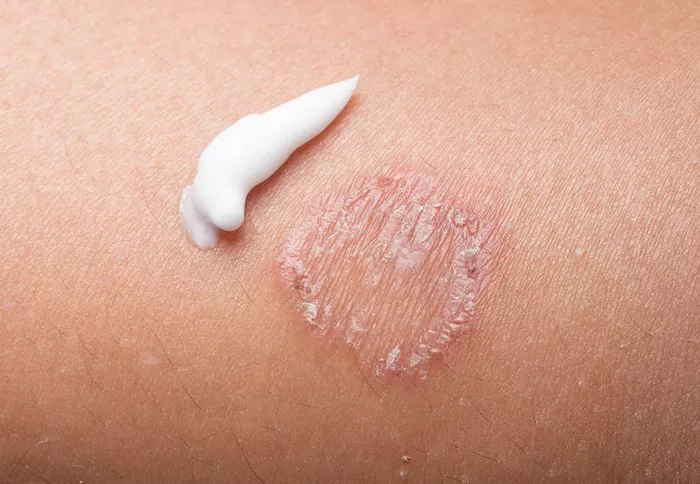Hives, medically known as urticaria, are a common skin condition characterized by raised, red or pink welts that are often itchy and can vary in size and shape. Understanding why hives occur involves exploring the underlying mechanisms, potential triggers, and effective management strategies for this bothersome condition.
Understanding Hives
Hives appear suddenly on the skin and can migrate, change shape, and vary in size within minutes to hours. They are caused by a release of histamine and other chemicals from specialized cells in the skin, leading to inflammation and swelling of the skin’s surface. This article explores the factors contributing to itchy hives and provides insights into managing this condition effectively.
Mechanisms of Itchy Hives
Hives occur when histamine, along with other inflammatory mediators, is released into the skin in response to various triggers. The release of histamine causes blood vessels to leak fluid into the skin, resulting in the characteristic swelling and itching associated with hives. The mechanisms behind itchy hives include:
Histamine Release:
Immune Response: Histamine is released from mast cells and basophils in response to triggers such as allergens, infections, medications, or physical stimuli.
Vasodilation and Itching: Histamine causes blood vessels to dilate, leading to increased blood flow to the affected area and resulting in swelling and itching.
Other Chemical Mediators:
Prostaglandins and Leukotrienes: These chemicals contribute to the inflammatory response, enhancing the permeability of blood vessels and intensifying the itching sensation.
Activation of Nerve Endings:
Neurogenic Factors: Itchy hives are also influenced by the activation of nerve endings in the skin, which respond to the release of histamine and other mediators by transmitting itch signals to the brain.
Common Triggers for Itchy Hives
Several factors can trigger the onset or exacerbation of itchy hives. Identifying these triggers is crucial for managing and preventing episodes of hives. Common triggers include:
1. Allergens: Foods (such as nuts, shellfish, eggs), medications (like antibiotics or aspirin), insect stings, latex, and pollen are common allergens that can trigger allergic hives.
2. Physical Stimuli: Exposure to heat, cold, pressure (such as tight clothing or scratching), sunlight (solar urticaria), water (aquagenic urticaria), or exercise-induced hives can trigger physical hives.
3. Infections: Viral or bacterial infections, including respiratory infections or hepatitis, can trigger hives in susceptible individuals.
4. Emotional Stress: Stress and anxiety can exacerbate hives due to their impact on the immune system and the release of stress hormones.
5. Autoimmune Conditions: Autoimmune diseases, such as lupus or thyroid disorders, can sometimes be associated with chronic hives (chronic spontaneous urticaria).
Diagnosing Itchy Hives
Diagnosing the underlying cause of itchy hives involves a thorough medical history, physical examination, and sometimes additional testing, including:
1. Detailed History: Understanding the timing, duration, and triggers of hives episodes.
2. Physical Examination: Identifying the characteristic appearance of hives on the skin, which may come and go quickly.
3. Allergy Testing: Skin prick tests or blood tests (specific IgE testing) can identify allergens responsible for allergic hives.
4. Provocation Testing: In some cases, provocation tests may be used to identify triggers such as physical stimuli or certain medications.
Management and Treatment of Itchy Hives
Managing itchy hives focuses on identifying triggers and reducing symptoms through various treatment approaches:
1. Avoidance of Triggers:
- Allergen Avoidance: Identifying and avoiding allergens responsible for allergic hives.
- Environmental Control: Minimizing exposure to physical triggers such as heat, cold, or pressure.
2. Medications:
- Antihistamines: Oral antihistamines (such as cetirizine, loratadine) are commonly used to block histamine receptors and reduce itching and swelling.
- Corticosteroids: Short courses of oral corticosteroids may be prescribed for severe or persistent hives to reduce inflammation.
SEE ALSO: Why Do Hives Spread on Your Body
3. Topical Treatments:
Calamine Lotion or Oatmeal Baths: Soothing topical treatments can provide relief from itching and help to calm inflamed skin.
4. Immunomodulators:
- Omalizumab (Xolair): A monoclonal antibody that targets immunoglobulin E (IgE), which may be prescribed for chronic spontaneous urticaria resistant to antihistamines.
5. Emergency Treatment:
- Epinephrine (Adrenaline): Injectable epinephrine may be necessary for severe allergic hives (anaphylaxis) accompanied by difficulty breathing or swelling of the throat.
6. Alternative Therapies:
- Acupuncture or Hypnosis: Some individuals find relief from chronic hives through complementary therapies, although evidence supporting their effectiveness is limited.
Living with Itchy Hives
Living with itchy hives involves adopting strategies to manage triggers and reduce the impact of symptoms on daily life:
1. Skin Care: Use mild soaps and moisturizers to keep the skin hydrated and avoid harsh chemicals or irritants.
2. Stress Management: Practice relaxation techniques such as yoga, meditation, or deep breathing to reduce stress levels and minimize the risk of stress-induced hives.
3. Emergency Plan: Individuals with severe allergies should carry an epinephrine auto-injector (EpiPen) and have an emergency action plan in place in case of a severe allergic reaction.
Conclusion
Itchy hives are a common and often frustrating skin condition characterized by raised, itchy welts that can appear suddenly and vary in size and shape. Understanding the underlying mechanisms and triggers of hives is essential for effective management and prevention of symptoms. By identifying triggers, adopting appropriate treatment strategies, and seeking medical advice when needed, individuals with itchy hives can minimize symptoms and improve their quality of life. Consultation with a healthcare provider or allergist is recommended for personalized diagnosis and management of itchy hives based on individual circumstances and underlying causes.
Related Topics:

























